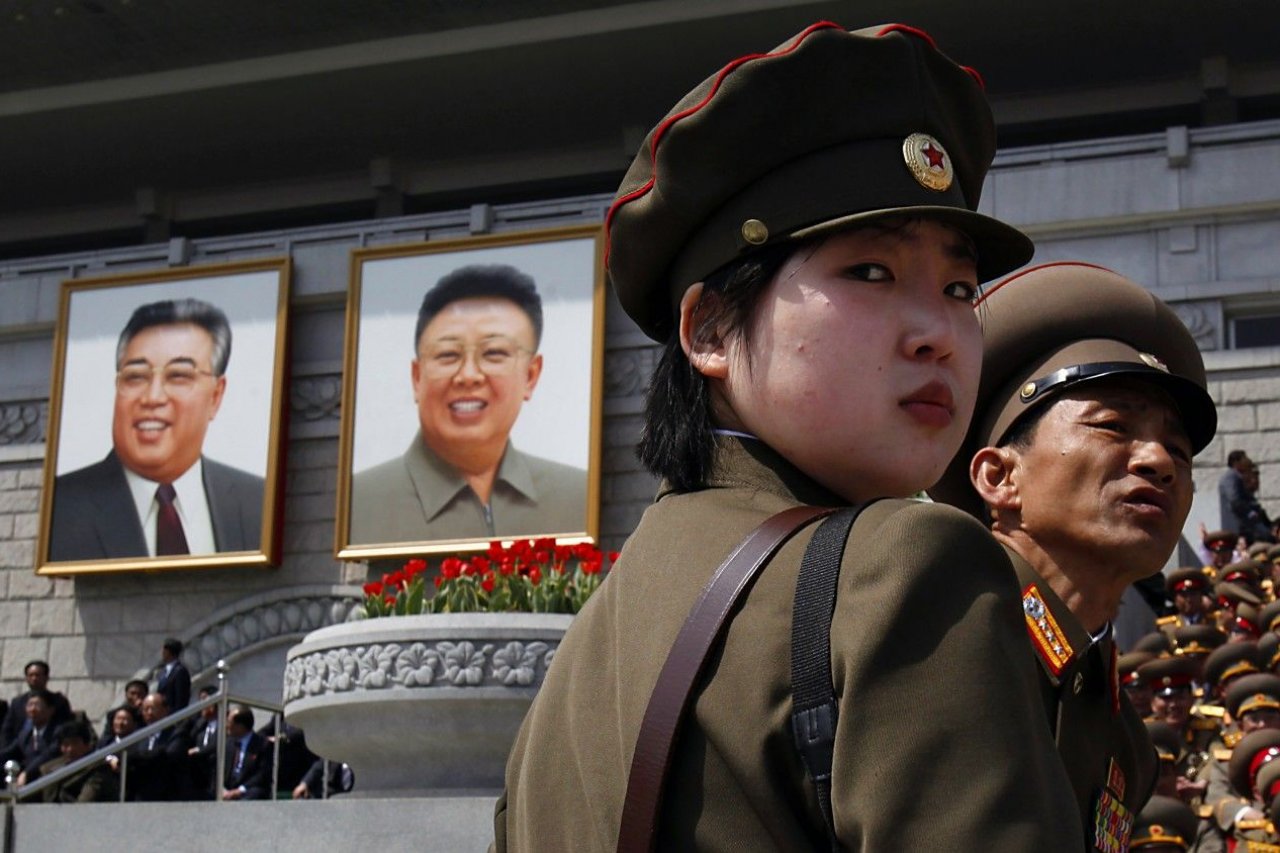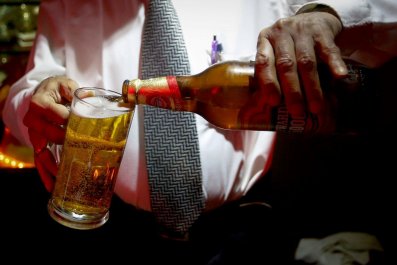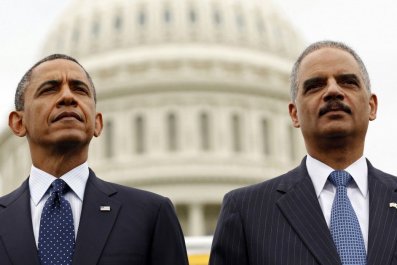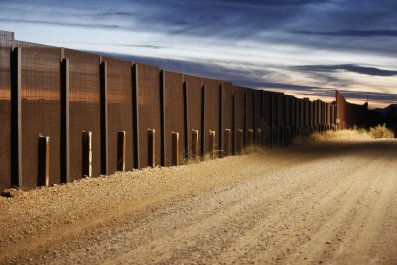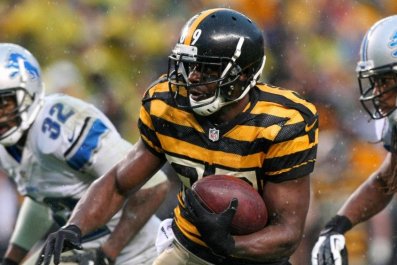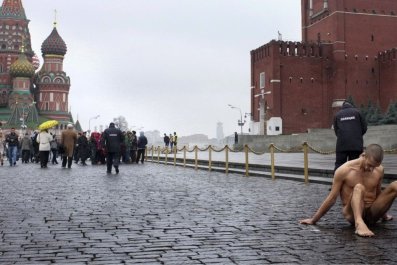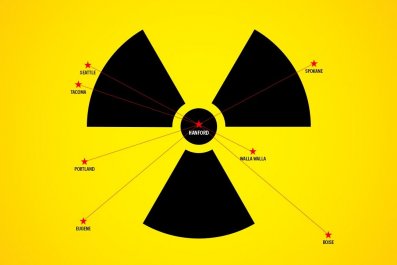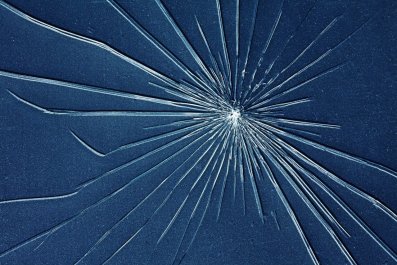In the spring of 1995, a small group of foreign journalists based in China packed their bags and jetted off for a rare trip to North Korea, a nation even more isolated at the time than it is now. Among them was my father, the Beijing correspondent for Time magazine, and my mother. When they returned, my father told me they had seen a unique and complicated country and that visiting North Korea felt like stepping back in time. He returned twice and began urging me to visit the "hermit kingdom" while I was in high school in nearby Beijing. But as a teen, the thought of spending my spring break in North Korea was about as appealing as - well, spending spring break in North Korea.
Almost two decades later, my attitude about North Korea had changed quite a bit. For a variety of reasons, including its chest-thumping nuclear threats, its new headline-stealing leader, the 31-year-old Kim Jong Un, and the country's strained relationship with China, I now had a strong desire to see for myself what my parents had been talking about for so long. And so, in early September, I was on the Beijing airport tarmac, waiting to take off for Pyongyang. And after six days, I can say that my parents were right: It truly is an amazing, confounding, and often ridiculous place that lingers in my thoughts, but the memories I relish most aren't the tours of the grandiose monuments or the viewing of the preserved corpses of former leaders. Instead, they are seven small, seemingly prosaic snatches of normal life in a most abnormal place. Whatever is the opposite of Kodak moments is what follows.
Dearly Departed Dear Leaders

North Koreans take their lineage very seriously, and preserving their traditions and culture is hugely important. That explains, in part, why the memories of two people - Great Leader Kim Il Sung and Dear Leader Kim Jong Il - are still cherished, by official mandate and with plenty of genuine feeling. The two deceased men are revered as gods, kings, and sages - a three-fer - and they are omnipresent: Their faces are on circular pins handed out in schools that even well-dressed adults in Pyongyang wear proudly. The Kims can also be seen in a large, grandiose painting in every hotel lobby. In the Korean War Museum there is a sculpture of Kim Il Sung in front of a half-dome filled with images of shooting yellow, blue, and purple fireworks. At the National Library, a large painting depicts a similarly celebratory image of Kim Jong Il: Smiling, he stands with his arms crossed as fireworks explode behind him. Photos of the two revered leaders are emblazoned on the exterior and interior of every important government building, every school classroom, and even above the doors connecting subway cars.
Evil Minders Unwind

"My wife is not very beautiful," one of our guide's told us, the top few buttons of his shirt undone. It was our second night in North Korea, and we were in a beer garden outside of Pyongyang with our tour guides, knocking back local beer and choking down soju, Korean rice wine.
Our group of 20 tourists had three guides - one leader and two apprentices, one of whom was a woman. The uninitiated might think they were evil minders ordered to monitor our every move, but they were friendly and curious, and on the long bus rides they wanted to sit next to us and ask questions. The men were especially interested in finding out if the women in our group had husbands or boyfriends, what dating was like overseas, and if we planned on getting married. One wanted to know if interracial dating is allowed in America.
The beer garden was a dimly lit, 24-hour drinking spot attached to our hotel, and there was an outdoor bar with three or four kegs, one of which we finished by night's end. Everyone was drinking and smoking, and after downing a few glasses, the guides started belting out Korean drinking songs. We would clink our bottles together, trying to keep in mind the social protocol we'd been told about by one of our guides: The bottle of the lower-ranking person should always be lower than the bottle of the person they're clinking with.
After a few drinks, our guides began to open up about many things, including their spouses. When that guide blithely disparaged his wife's looks - he kept repeating that his wife was not beautiful, but had a good heart - some of us protested. "No, really," he said, "but it's okay. I fell in love with her the first time I saw her."
Huck Finn and 'Yellow Submarine'

In the entryway of the People's Study Hall in Pyongyang stands an enormous white stone statue of Kim Il Sung sitting on a throne. It's so big that it brings to mind the Lincoln Memorial, and on either side of it, escalators carry people up to the main floor of the library. During our tour of the library, we walked through many rooms, and they all had the requisite pictures of the two dear departed leaders.
Since the place was both a library and a study center, we visited classrooms where students were learning Chinese and English. There was even a music-appreciation room, where old-school boom boxes lay on desks. Our guide popped in a CD and soon we were all singing along to the Beatles classic, "Yellow Submarine".
At the checkout area, our guide asked the librarian to show us some books, so she typed something on her keyboard and a few moments later, thanks to an automated system, a bundle of books shot out of a small hole in the concrete wall behind her. Among them were an anthology of Shakespeare plays, a physics textbook, and Huckleberry Finn. As I started to open one of the books the guide tapped me on the shoulder and said, "Here, you read this one," handing me a book on home economics. "I'm joking!" he laughed, proving that hoary jokes about gender role stereotypes are alive and well in North Korea.
Hoops Springs Eternal
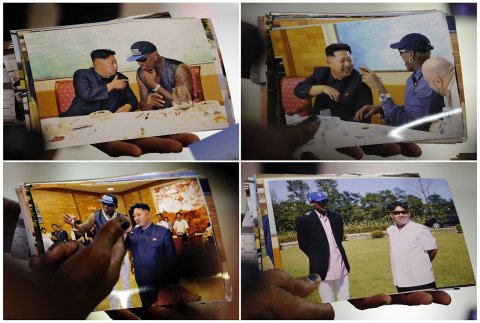
It's no secret that Kim Jong-Un is a fan of basketball and Dennis Rodman, the former Chicago Bulls and Detroit Pistons power forward and NBA Hall of Famer. During Rodman's second visit to Pyongyang in early September, during which he reportedly sowed the seeds of "basketball diplomacy," North Korean state media photographed the two watching a basketball game in the capital and got several shots of Rodman signing some jerseys and basketballs for the leader. It was clear that the rest of North Korea shares Kim's interest in the game. There were pickup games being played in the public parks throughout Pyongyang. Some guys looked like they were on their lunch breaks, casually shooting hoops in their undershirts; others came in real athletic gear, ready for a serious run. The enthusiasm was evident, but there weren't many fundamental skills on display - no dribbling, no passing. Instead there was a lot of shooting - and a lot of air balls.
When It's Dark, It's Dark
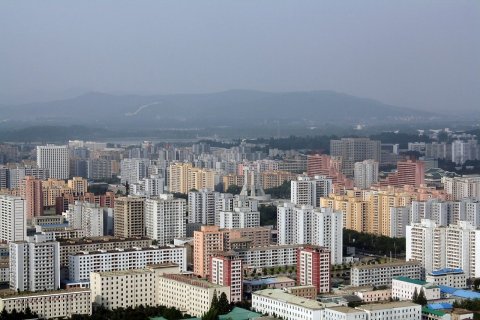
Most of the buildings in Pyongyang are low- and medium-rise concrete structures, and many are painted in green and pink pastels, which adds a little color to the foggy, gray skyline. Each floor of the residential buildings has a balcony, with clothes drying on lines, potted plants, hanging planters, and even some small vegetable gardens. In the center of the city is a cluster of modern high-rises, which is in stark contrast to the many old, Stalinist-style structures that surround it.
My hotel, which was presumably more comfortable than the average Pyongyang home, didn't have consistent electricity - sometimes it just wouldn't work - and some of the elevator banks weren't functioning. At night, when I looked out the window at the city, I'd see a lot of darkness - although the big squares and monuments were always bathed in light.
But in the hotels, hallways and rooms were usually not well lit, and at the hotel on Pyongyang's Yanggak Island, the elevator doors would sometimes open to pitch-dark floors.
Everybody Loves a Parade
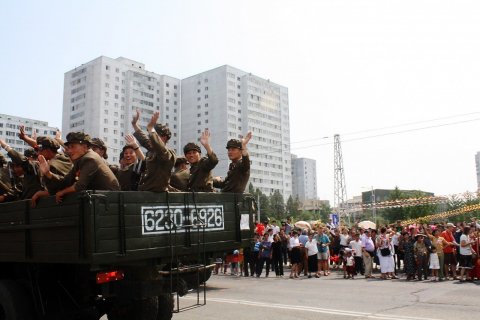
September 9, 2013 was the 65th anniversary of North Korea's National Day, so we joined the adoring crowds lining the streets and watched truckloads of uniformed soldiers drive by. Soldiers leaned out of their passing vehicles, handing me and other tourists fake red tuberose and purple orchids, which we learned were nicknamed, perversely and patriotically, Kimjongilia and Kimilsungia. An elementary school band on a corner played patriotic-sounding songs on brass instruments. Good for marching, not for dancing, but some of the tourists started dancing anyway, and the locals joined us.
The parade lasted 20 minutes or so, and wasn't so much a parade as it was a simply a very long procession of vintage green military trucks stuffed with soldiers. The kids cheered the soldiers, and many of the men in uniform smiled when they saw foreigners waving at them, one of them even yelled, "Hello, welcome!" Both soldiers and onlookers seemed to be having a great time.
"Smash Despair!"

When one of our guides asked me what kind of music I liked, I offered him my earbuds, and found a song by Mumford & Sons. He gave it about 10 seconds before pulling out the earphones. "Do you like it?" I said. "Not really," he answered. When I told them they were very popular in the West, he showed what seemed to be polite stoicism.
My first taste of classically North Korean music came on board Air Koryo, North Korea's official commercial airline, where our in-flight entertainment was an all-female ensemble of folk singers and musicians feverishly singing with while dressed in over-the-top glittering costumes. When our tour guide popped in a DVD featuring a similar performance during one of our bus rides, I realized that North Koreans love watching kitschy videos filled with sparklers, patriotism, and retro music video editing wipes. Most of the music, art and film in North Korea is propaganda, but cheesy music videos, filled with bright colors and outlandish costumes, are ubiquitous.
Kim Jong Il was a champion of revolutionary patriotic music, and in his state-published biography, Kim Jong Il: The Great Man, Kim noted that music and songs are key to advancement and are necessary in order to "defeat pessimism with optimism and smash despair with hope."
Just don't try to smash your despair with Mumford & Sons.



